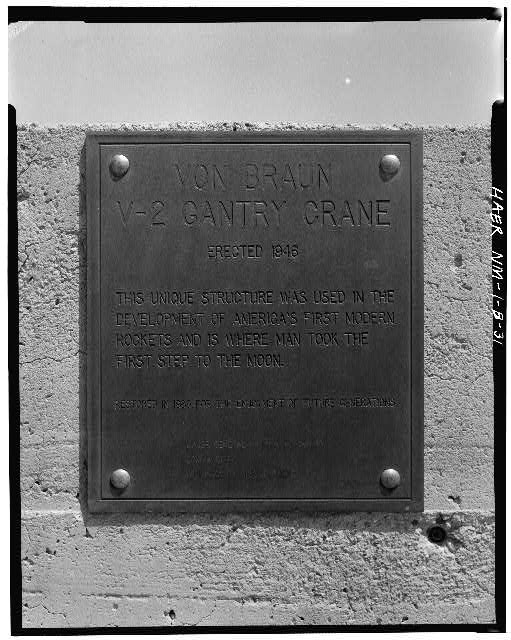The development of the large liquid fueled rocket, which has profoundly affected events in the twentieth century, was initiated by the Germans in the 1930s and, after World War II, continued by the United States at White Sands Proving Ground (now White Sands Missile Range). In all, 67 V-2 rockets were assembled and tested at White Sands between 1946 and 1952, providing the U.S. invaluable experience in the assembly, pre-flight testing, handling, fueling, launching, and tracking of large missiles. In the late 1940s, several V-2s were combined with a smaller rocket, the WAC Corporal, to become the first large, multi-stage rockets to be launched in the Western Hemisphere. Additionally, scientific experiments conducted in conjunction with the V-2 program yielded significant information about the upper atmosphere and other areas of research, including the effects of space on mammals.
Documents were complied after 1968
| Document Type: | Photograph |
| Historical Event: | New Mexico Role in Cold War (1945-89) |
| Sub Event: | German Scientists Move to NM |
| Origin: | Library of Congress |
| Date: | December 30, 1968 |
| Author: | Historic American Engineer Record |
| Permission: | Public Domain |
| Contributor: | Tammie Torres |

Digital Text:
Related Documents
- Gantry Crane view from Blast Pit
- American V-2 Rocket Facilities
- Families Arrive from Germany to join 13 German Expert at White Sands
An educational resource for New Mexico high school history programs.

